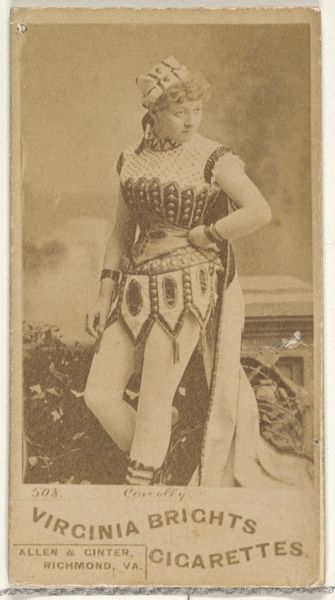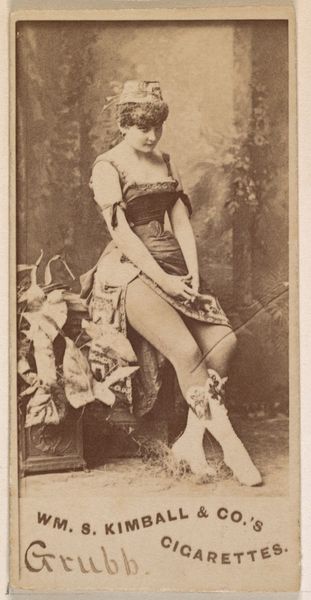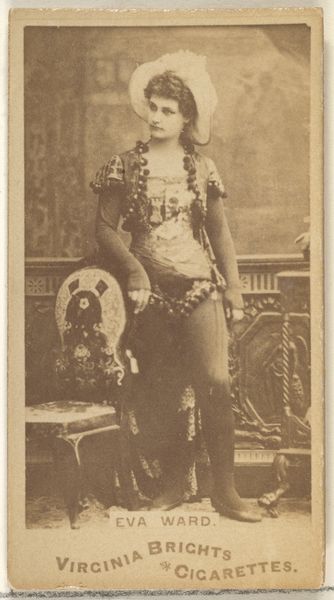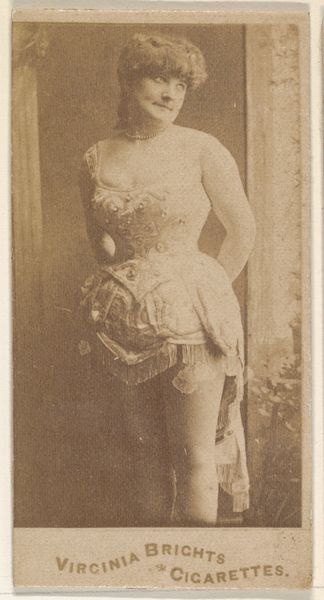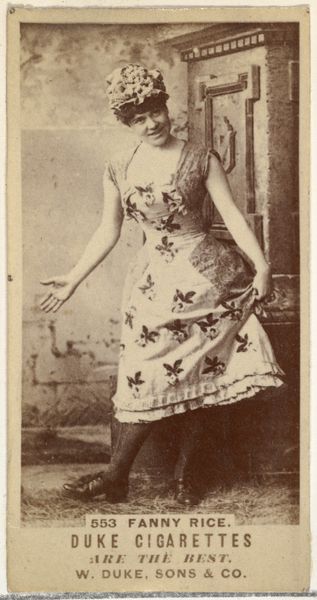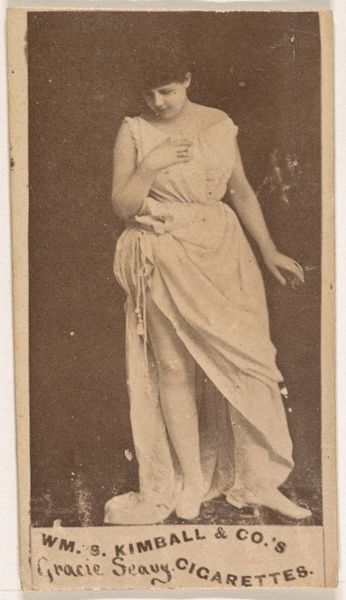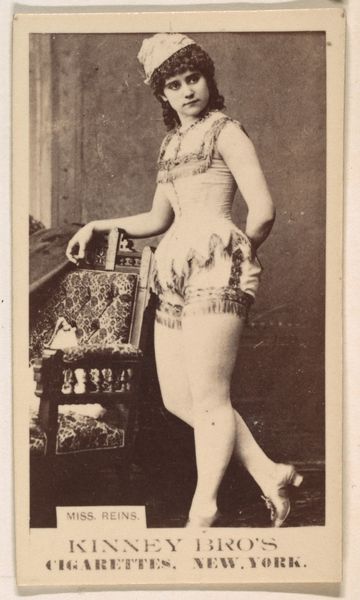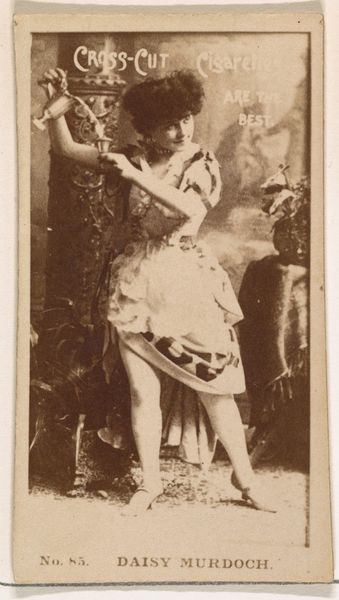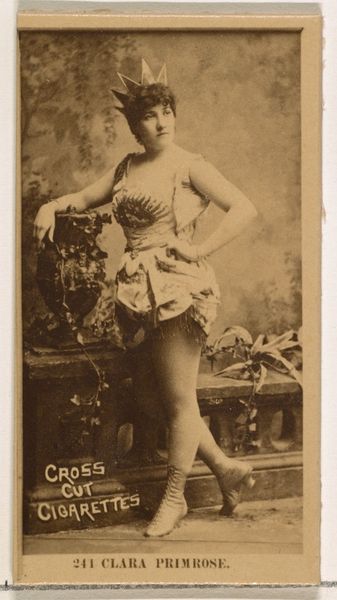
Mlle. Jager, from the Actresses series (N203) issued by Wm. S. Kimball & Co. 1889
0:00
0:00
drawing, print, photography
#
portrait
#
drawing
# print
#
photography
Dimensions: Sheet: 2 5/8 × 1 3/8 in. (6.6 × 3.5 cm)
Copyright: Public Domain
Curator: Here we see Mlle. Jager from the Actresses series. These cards were issued by Wm. S. Kimball & Co. back in 1889, quite the snapshot of its time. Editor: It's immediately striking. This sepia tone lends a real antique quality. I notice the subject posed with what seems to be animal fur, almost theatrically. I'm intrigued by how this all points to material culture and performance. Curator: Absolutely, we see a confluence of printmaking and photography. We might think of these portraits not just as representations, but as material objects circulating in a complex social system. Consider, how does the commercial use of the photograph shape notions of celebrity and gender during this period? Editor: Right. The commodification of these actresses through cigarette cards underscores their objectification. It invites a critical examination of labour and how gender roles intersected with commercial interests in the 19th century. Think of how this circulation reinforces certain ideologies and expectations. Curator: Indeed. Mlle. Jager herself embodies these tensions. As an actress she performs a role, but through the lens of this commodity, her persona becomes bound to capitalistic structures. What stories could this portrait be telling us about women in performance? Editor: Also consider the medium. These were cheaply produced, designed for mass consumption. Its mass production connects to larger industrial and consumerist practices of the period, raising questions about access, authenticity, and the blurring lines between high art and popular culture. Curator: And we must remember to historicize these images within systems of race and power. White women were being given more social currency at the time. Where might she, as a figure in a visual economy, stand in that system? What doors may or may not have been opened for her as an actress given the social biases of the day? Editor: Exactly. And that reading reminds me how crucial it is to remain wary of simply celebrating aesthetic qualities without acknowledging the ethical issues that may permeate art, regardless of period or material composition. Curator: It's a perfect way to remember that a historical artifact does not need to become, nor should it be made into, an uncomplicated cultural champion to merit reflection and thought. Editor: Well said.
Comments
No comments
Be the first to comment and join the conversation on the ultimate creative platform.
